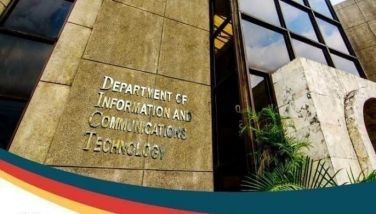Locsin decries ‘plot’ to sell Philippine properties in Japan

MANILA, Philippines — Foreign Affairs Secretary Teodoro Locsin Jr. revealed yesterday a “plot” to sell four Philippine properties in Japan.
“There is another plot to dispose of four of our Japan properties. This is a second Pearl Harbor perpetrated by Filipinos on our own patrimony,” Locsin tweeted.
He did not identify who is behind the plot.
According to a Supreme Court decision, the four are “properties and the capital goods and services procured from the Japanese government for national development projects are part of the indemnification to the Filipino people for their losses in life and property and their suffering during World War II.”
These are the 3,179-square meter Philippine property on 306 Roppongi St. 5-Chome Minato-ku in Tokyo; the 2,489.96-sq.m. Nampeidai property at 11-24 Nampeidai-machi, Shibuya-ku also in Tokyo; the 764.72 sq.m. commercial property at 63 Naniwa-cho in Kobe; and the residential property at 1-980-2 Obanoyama-cho, Shinohara, Nada-ku, Kobe.
Locsin rejected using the plight of veterans by those pushing the sale of Philippine properties and raise funds for them.
The Department of Foreign Affairs, according to Locsin, already sent to Congress its opposition to the sale.
“There are other ways to help veterans – BCDA was sold for them but proceeds were stolen. We already sent our position to Congress opposing it,” Locsin said.
“The plight of our poor veterans, so few of them left, have been invoked by every gang of officials who’ve run through the budgets of their own agencies. Usually happens toward the end of a term. Retirement fund of last resort,” he added.
He vowed to fight the sale of the properties in Japan.
“I will fight this to their end. Shet before I go down in ignominy as the guy who sold our Japan properties,” he added.
According to the Philippine embassy in Tokyo, the 3,190.21 sq.m. Roppongi property was acquired by the Philippine government on June 27, 1958 through the 1956 Reparations Agreement between the Philippines and Japan.
It was the site of the chancery of the Philippine embassy until 1976 when the chancery was transferred to the vacated Philippine Reparations building in Nanpeidai, Shibuya-ku. The property was totally abandoned in 1997 for difficulty in maintenance and the building grounds were left to the elements leading to its condemnation by the government as uninhabitable and unsafe.
The original structure built during the Taisho period (1923) was a highly acclaimed architectural piece in the genre of the renaissance. It was a three-story villa with an astronomical observatory tower and surrounded by a Japanese garden of tall trees laced with imported boulders or stones. The owners, Ryoji Oda and his wife Ineko, lived in the property for 33 years until it was sold to the Japanese government in payment of tax arrears. Ownership was transferred to the Philippine government.
The sale of the Roppongi property was vehemently opposed by the late vice president Salvador Laurel.
In his petition, Laurel argued that “The Roppongi property is not just like any piece of property. It was given to the Filipino people in reparation for the lives and blood of Filipinos who died and suffered during the Japanese military occupation, for the suffering of widows and orphans who lost their loved ones and kindred, for the homes and other properties lost by countless Filipinos during the war.”
Former Supreme Court associate justice Hugo Gutierrez Jr. upheld the Laurel petition to stop the sale of the 3,197-square meter Roppongi property of the Philippines, making the Feb. 20, 1990 TRO permanent.
Last month, Locsin said the DFA opposed the sale of its properties abroad, especially in key capitals.
He tweeted, “We have meanwhile turned down all proposals of acquisition of properties abroad in this pandemic.” – Delon Porcalla
- Latest
- Trending




























